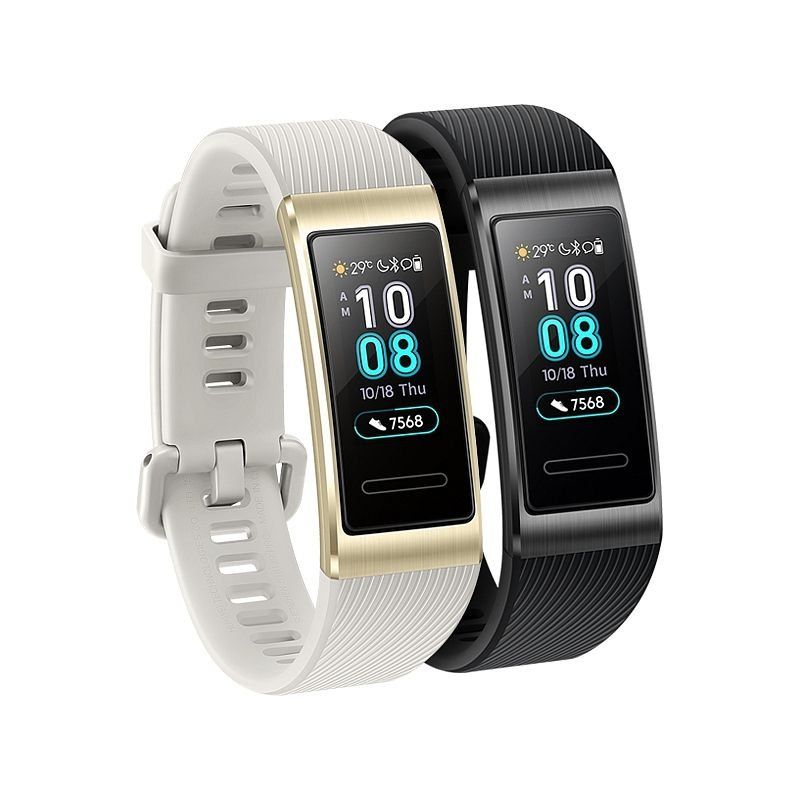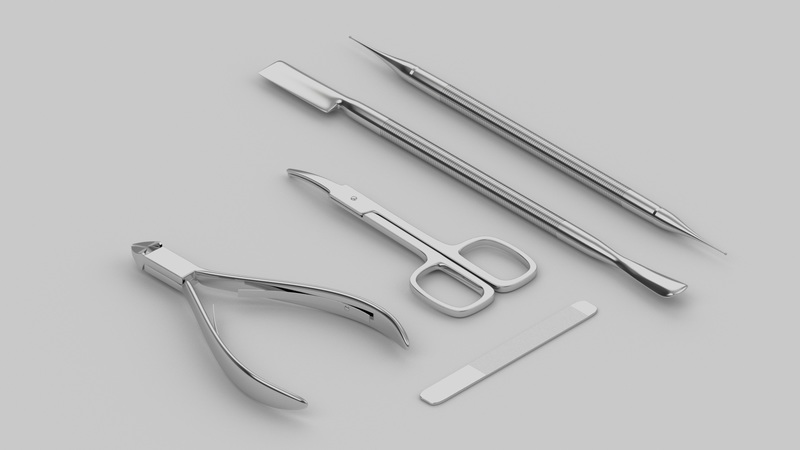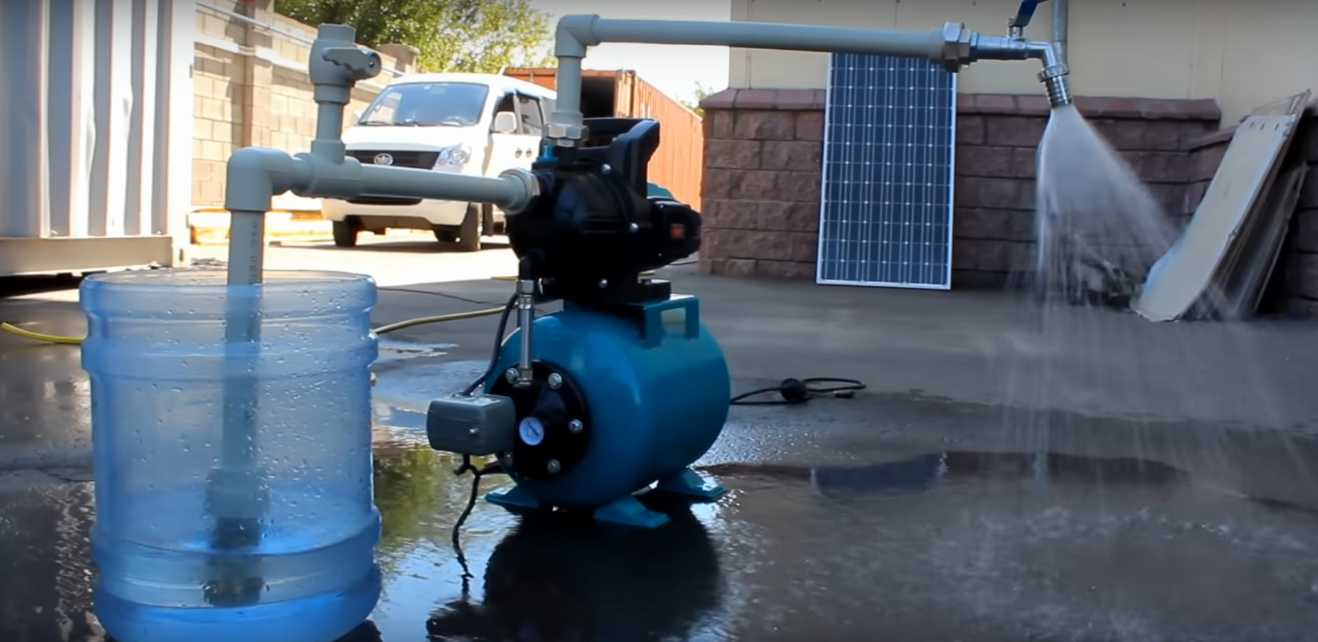Rating of the best car lamps for 2024

Light is remembered in darkness. Interest in a car lamp arises a few seconds after it burns out. The motivation for choosing to replace is the main thing to burn. However, not all so simple. The performance of vehicle lighting devices is one of the factors affecting road safety. And so serious that the "Rules of the United Nations Economic Commission for Europe" No. 37, regulating basic standards for the safety of road vehicles, devote an entire section to the requirements for vehicle lighting devices and introduce special markings for automobile lamps approved for use in the EU.
Automotive lamps work under special operating conditions: sudden temperature changes, vibration of components and assemblies, shaking caused by the condition of the roadway. These and other elements of influence influenced the formation of design features, this type of components of the complete set of vehicles.
Classification of car lamps
Automotive bulbs are composed of three main parts
- base;
- flasks;
- heating spiral or an element performing its function.
The markings located on the base, and sometimes on the bulb, are a complex characteristic of every part of the lamp. Knowledge of the meaning of the main marking symbols is necessary for the correct choice of replacement or selection of analogs for a failed light source.
Classification by type of base
- Flanged:
The most common modification for use in headlights, as a source of low and high beam radiation. Flange - a metal or plastic base for placing the bulb and fixing the lamp in the socket of the light device.
- Pin:
They have a cylindrical base. Round pins are placed symmetrically on the base surface for single filament lamps, or offset for double helix lamps and colored turn signal lamps. This base / plinth design provides easy replacement and reliable tightness of fixation in the seats. The oldest and most widespread modification of automobile lamps to date.
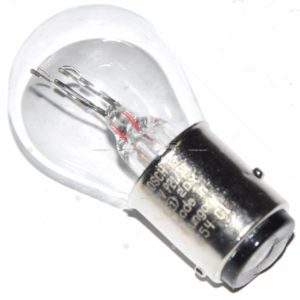
Marking: offset pins meet P21 / 5W for two filament lamps and PY21W with an orange bulb for a turn signal, making it impossible to supply a colorless bulb.
- reliability;
- simplicity;
- cost.
- susceptibility to oxidative processes;
- relatively short service life.
Soffit:
- 2 basement
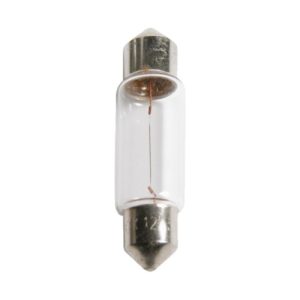
They are used for interior lighting and license plate lighting.
- design features allow them to be placed in flat devices in flat devices;
- two plinths provide greater contact and resistance to adverse influences.
- limited functionality due to design features.
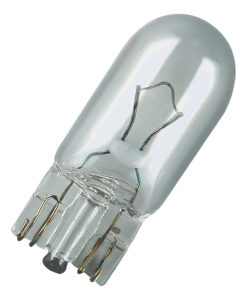
- Without basement
The base for these light sources is the body of the glass bulb. Originally designed as dashboard lamps, but thanks to their excellent functionality, over time, they have spread throughout the car, displacing other types of lamps.
- compact dimensions;
- long service life provided by the absence of oxidative processes on the surface of the base.
- limited functionality related to the power range from 1W to 21W.
By the principle of action
The emergence of the following types of light sources at one time was a real technical revolution in the global automotive industry. In the struggle to increase the brightness of light, automotive engineers faced the problem of energy supply, conventional lighting lamps consumed too much of it, reducing the resource of the units, and increasing fuel consumption. As a result of an innovative approach, a line of automotive lamps has emerged with a completely new operating principle.
Halogen lamps
They differ from their predecessors in that an inert gas is pumped into the flask, the spiral located in such an environment is heated to a higher temperature, which makes it possible to achieve high brightness of the glow, with a relatively low power consumption. The history of the prayer line begins with the H7 model. They have a brighter, more concentrated and dense beam of light. The technology was developed in the models H8, H9, H11, power and brightness allows their use in vehicles equipped with compact lighting devices.
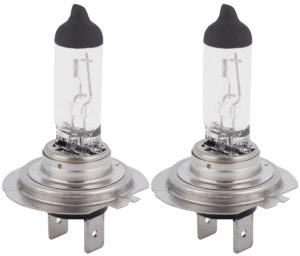
- affordable price.
- short service life;
- very high operating temperature allows use only on vehicles equipped with special optical devices.
The best halogen low beam lamps - BOSCH H4 Gigalight +120
The xenon effect, guaranteed by the manufacturer, means a brighter light + 50% compared to analogs from other manufacturers, close to the spectrum of daylight.
- cost;
- longer service life than other representatives of the price segment.
- for this price category are absent.
Best halogen high beam bulbs - Philips H7 3700K White Vision
The flasks are made of quartz glass patented by the manufacturer, which can withstand much higher pressure of the gas injected inside. The result is: maximum brightness for a given type of light source and an optimal spectrum, causing minimal glare for oncoming traffic.
- brightness;
- long service life.
- cost.
Best halogen low and high beam bulbs - Philips H1 3250K Vision Plus
Driver reaction time is the most important factor in preventing road accidents. It is hardly possible to influence the individual reaction rate, but to warn in advance. The Philips H1 3250K Vision Plus lamp does this job perfectly. The brightness of light is 1.6 times higher than that of analogs, extending the illumination zone by 25 m.
- excellent luminous flux data;
- long service life.
- cost.
Gas discharge (xenon) lamps
The name was borrowed from the gas of the same name pumped into the flasks of the first models. Despite the external resemblance to halogen lamps, the principle of operation of xenon lamps is completely different. The light source is a gas under pressure and heated to a certain temperature.Physics of the process: an electric current causes an arc discharge between two electrodes, the gaseous medium, warmed up to a certain temperature, begins to glow.
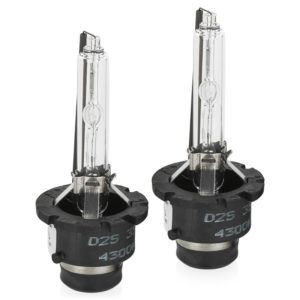
- The brightness of xenon glow is 100-200% higher than halogen.
- The temperature required to ensure maximum brightness occurs after some time;
- The need for special equipment to start the glow process.
The trendsetter for xenon lamps is Philips, which in the late 90s established their production for several brands of European cars. You need to know that since then two modifications of xenon headlights have been preserved:
- D2S - equipped with a lens;
- D2R - equipped with a reflector.
Xenon lamp group marking
- xenon for H1-H27 base HB3-HB5 can be installed in optical devices of vehicles designed for halogen lamps;
- bixenon, with the designation H4M; HB1M; H13M and some others including the letter M in the marking can also replace the H4 halogen, high and low beam;
- xenon D1S, D1R-D4S, D4R, models with which cars come off the container are not interchangeable.
Best Xenon Low Beam Bulbs - Clearlinght Xenon Premium + 150%
Night turned into day, this is not when "white nights", but the impression after installing this xenon. The brightness of the glow increased by 1.5 times, lengthens the light cone by 50 m. The spectral composition of the radiation is very comfortable for sight and does not get tired during long driving in the dark. Recommended for installation on vehicles that operate mainly at night.
- brightness;
- range;
- two-year warranty.
- cost.
Best Xenon High Beam Bulbs - Philips X-Treme Vision + 50%
And without that, one of the brightest high beam lamps, released as a model = 50%, remained out of competition. A ray of snow-white color, extended, bright, saturated and uniform.
- high efficiency in the dark and at dusk.
- insufficient visibility in bad weather conditions.
Best xenon lamps for low and high beam - Philips Blue Vision
There are special requirements for universal lamps, and Philips Blue Vision meets them perfectly. A snow-white beam of light with a slight bluish tint not only illuminates the space, but seems to make it a little cleaner. And of course there is a uniformity of the luminous flux, characteristic of this manufacturer, both in the near and far modes.
LED lamp
Before migrating to car headlights, LEDs as a light source have come a long way of development and improvement in computers, televisions and telephones. At the beginning of the journey, they were used, both inside the saloon, to illuminate the dashboard, buttons and displays. And then the compactness and brightness provided them with a place among the head light sources and rear lights. Statistics confirm: the use of LEDs in the rear brake warning lamps increases the reaction speed of the driver following the vehicle by 30%.
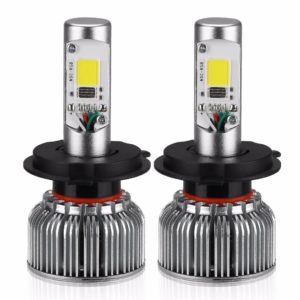
The LED bulbs are equipped with various caps to fit Xenon and Halogen headlamps. But when purchasing LED lamps, it must be borne in mind that the LED can demonstrate its advantages only on certain optics.
- instant warm-up and maximum brightness;
- low glow temperature;
- the highest utilization of consumed energy;
- the length of the lighting zone is 300 m.
- higher cost than halogen and xenon counterparts.
Best LED Low Beam Bulbs - Clearliqht H7
Clearliqht H7 -2800 lumens of luminous flux brightness speaks for themselves, with no cut-off line (one of the factors of blinding oncoming traffic).
- excellent brightness and beam length;
- not found
Best LED bulbs for high beam - Optima LED i-ZOOM
Optima LED i-ZOOM, an excellent LED lamp with a bright light, a compact radiator that does not require alteration of the rear headlight cover, an original LED design in the form of a halogen lamp filament.
- the ability to use in freight, light vehicles, special equipment and motorcycles.
- cost.
The lamps listed above can be combined by setting one modification to the dipped beam, and another to the distant one.
Fog lamps
An unexpected change in the traffic situation is one of the most common causes of road accidents. Weather conditions rightly fall into this category, and fog is especially dangerous because it deprives the driver of the precious seconds needed to make a decision and react accordingly. Fog lights designed to neutralize such situations must meet the following requirements:
- the parameters of the light beam should not create a water-air wall that masks the luminous flux;
- the characteristics of brightness, range and color of the luminous flux must ensure its penetration through the water-air cushion of fog that absorbs ordinary light radiation.
Leaders in the production of "fog lights": Hella, Osram, PIAA, Wesem Morimoto.
- Hella, Osra - both companies from Germany and both with more than a century of history, have production facilities around the world;
- PIAA, a Japanese company - the world leader in the production of halogen lamps;
- Wesem, a Polish company established in the middle of the last century;
- Morimoto, despite the Japanese sound, is an American company, production is located in China, but the quality of the products is very decent.
Best PIAA 50XT Fog Lights
PIAA 50XT is a rectangular reflector model, fastened to the car body using a stationary bracket included in the package. Simple beam adjustment with fixing with a conventional M8 bolt.
Good waterproofing is achieved by rubber seals of the power input and sealing of the protective glass. The kit includes a repair kit and spare lamps. The light spot is characterized by wide coverage and a length of 25-30 m.
- Quick and convenient replacement of the lamp without adjustment;
- The ability to use lamps with almost all base / plinth modifications;
- Good penetration of the beam through the water-air cushion.
- High price.
Laser headlights
The principle of operation of this innovative device is as follows: a laser beam, when passing through a phosphoric gas, creates a very bright glow, which, reflected from the lens, is evenly scattered without creating a beam. Experimental tests have shown that laser headlights illuminate the highway at a distance of 600 m, completely without blinding oncoming traffic. Unfortunately, laser lamps do not yet exist, only headlights for promising cars. This section is for informational purposes only.
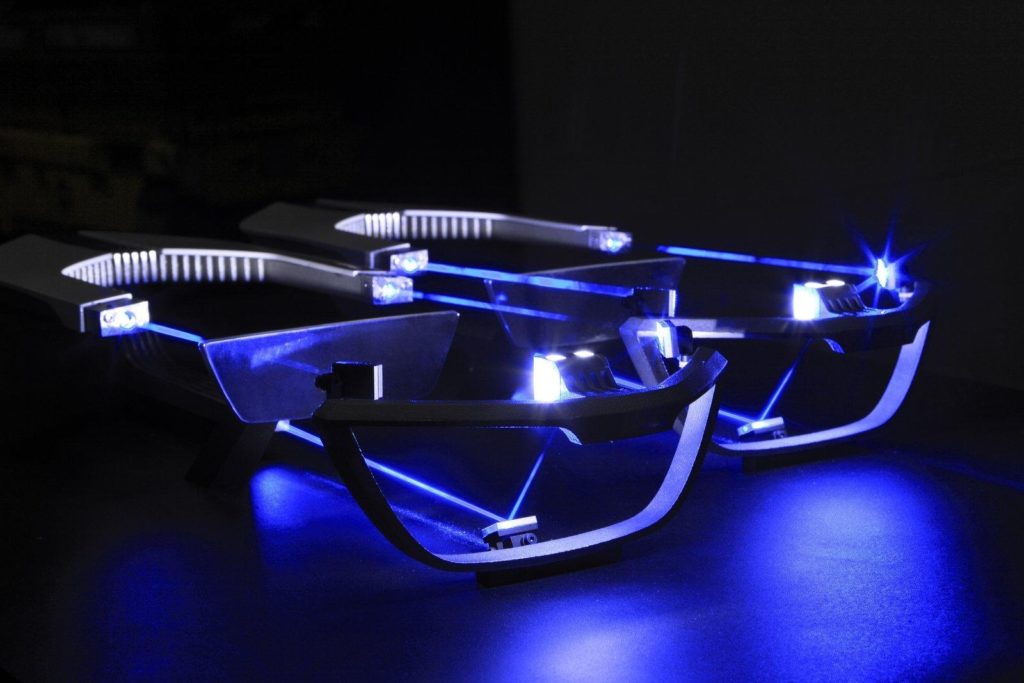
When choosing a lamp for any light source, there are a lot of nuances to consider. Before you put in a fancy product, you need to make sure it doesn't melt the optics of your car. If there is a burnt sample, you can pick up a light bulb by analogy. When ordering via the Internet, you will have to carefully study and fill in the marking. When purchasing a product, it is also important to carefully read the labeling. Non-standard marking or its absence may indicate counterfeit products.
new entries
Categories
Useful
Popular articles
-

Top rating of the best and inexpensive scooters up to 50 cubic meters in 2024
Views: 97661 -

Rating of the best materials for noise insulation for an apartment in 2024
Views: 95022 -

Rating of cheap analogues of expensive medicines for flu and colds for 2024
Views: 91751 -

The best men's running shoes in 2024
Views: 87681 -

Top ranking of the best smartwatches 2024 - price-quality
Views: 85091 -

Best Complex Vitamins in 2024
Views: 84801 -

The best dye for gray hair - 2024 top ranking
Views: 82406 -

Rating of the best wood paints for interior use in 2024
Views: 77202 -

Ranking of the best action cameras from China in 2024
Views: 75269 -

Rating of the best spinning reels in 2024
Views: 74827 -

The most effective calcium supplements for adults and children in 2024
Views: 72462 -

Top rating of the best means for male potency in 2024 with a description
Views: 68296
